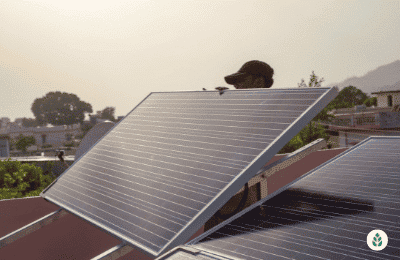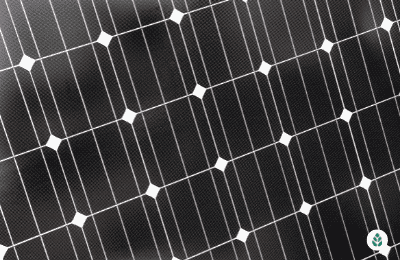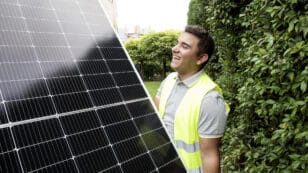
Is Solar Worth It in Montana? (2024 Homeowner's Guide)
Here’s a quick overview of solar viability in Montana:
- Montana ranks 38th in the country for solar installations.*
- The average electricity rate is 13.10 cents per kilowatt-hour.**
- The average solar payback period is 13 years.***
- Homeowners are eligible for the Renewable Energy Systems Exemption and the federal solar investment tax credit (ITC).
- The average homeowner saves $20,716 over the lifetime of their solar system.***
*According to the Solar Energy Industries Association.1
**Data from the Energy Information Administration.2
***Calculated assuming the system is purchased in cash.
Each product and or company featured here has been independently selected by the writer. You can learn more about our review methodology here. If you make a purchase using the links included, we may earn commission.
Montana ranks 38th in terms of solar conversions, meaning the solar industry is less prevalent there than in many other areas throughout the country. Considering the slow adoption and the below-average electricity rates residents enjoy, Montana homeowners are left to wonder if going solar is worth it. Generally speaking, it is, but there are quite a few things you need to consider to ensure your system will save you money. Below, we’ll discuss the factors that affect solar viability for your home, as well as the benefits you’ll enjoy if you do decide to go solar. We’ll also provide some information on things you should look out for when moving forward with solar conversion in Montana.
To speak with an EcoWatch-vetted professional who can help you determine whether solar is worth it for your Montana home, follow the links below.

OnSite Energy

Local Service
Average cost
Pros
- Excellent reputation
- Great warranty coverage
- Offers products from leading manufacturers
- Certified B Corp
Cons
- No leases or PPAs
- Slightly expensive

SBS Solar

Local Service
Average cost
Pros
- Outstanding customer service
- Full-service home energy solutions
- Great warranty coverage
Cons
- No leases or PPAs
- Limited brands of solar equipment available

Solar IPS

Regional Service
Average cost
Pros
- Offers products from leading manufacturers
- Great warranty coverage
- Many financing options
Cons
- Some reported communication issues
- Slightly limited service offerings
Watch Below: Learn What To Know Before Going Solar in Montana
How to Figure Out if Solar Panels are Worth It in Montana
Converting to solar is a great option and a sound financial investment for many Montana homeowners, but it’s not ideal for everyone. Below are some things to consider while you assess your home to see if solar panels are worth it.
What’s Your Home Electricity Consumption?
Your home’s monthly energy needs are often a good indication of whether solar could be a good investment for you. Solar panels save you money on your electric bills, so the less you pay for energy, the fewer savings you’ll enjoy. An average monthly electricity consumption of 500 kilowatt-hours is a common benchmark for solar viability. If you use more than this amount per month, the likelihood is that solar will be worthwhile for your home. Montana homeowners use an average of 858 kWh monthly, which is well above this benchmark. As such, most residents will find that solar is a good option, at least in terms of energy needs. You can check your average monthly consumption on your past electric bills.
How Much Is It To Go Solar in Montana?
The total price to go solar in Montana depends on many factors, but residents pay an average of $3.22 per watt, which is well below the national per-watt price of $3.33. The typical system size requirement in MT is 9 kilowatts, meaning the standard total will be about $28,980 before the federal tax credit or $20,286 after.
Solar panels provide the most value where electricity rates or energy usage is high. Montana residents use above-average energy but pay less than the national average per kWh. Coupled with the low price of solar equipment, the above-average energy needs mean solar will be a great investment for most homeowners in the area.
What’s the Payback Period for Solar in Montana?

What Are Average Buy-Back Rates in Montana?
Net metering is one of the most popular state solar incentives in the country, and many states provide energy buy-back programs to make converting to clean energy more appealing. The policy lets you sell excess energy you produce with your panels to your electric company for a credit to your bill for incoming energy. Montana does mandate net metering, but it doesn’t specify a rate at which your utility company has to buy the excess power. The rate will vary between companies, with some offering the retail rate and others offering well below it. If you only have access to a less appealing net metering program, adding a solar battery to your system will help you maintain low energy bills or eliminate them altogether.
How Much Sun Does Your Roof Receive?
Solar panels are only as efficient when they receive direct sunlight, which means homes that get more sunlight will naturally be a better fit for solar panels and will have a higher potential for energy savings. Montana as a whole receives 201 sunny days per year, which is about in line with the national average of 205 sunny days. From a sunlight availability perspective, Montana is a relatively good place to go solar. However, not all homes in MT will be ideal, so you’ll have to assess your specific property. The direction your roof faces makes a difference, as south- and west-facing roofs receive the most sun, by far. Additionally, shading on your property from trees or buildings can make solar less profitable for you overall, as it will reduce the amount of sun your panels receive.
What’s the Outlook on Solar in Montana?
Solar power is far less popular in Montana than in most states, but the prevalence of residential solar conversion is growing and is expected to do so in the future. Solar installations have steadily increased in numbers over the past decade, even after the state met its Renewable Portfolio Standard (RPS) goals. Although solar adoption has been slower in Montana than in many other states, this effectively means that the industry only has more room to grow than in most of the country. As solar becomes more prevalent, the price of the equipment is expected to drop even further, and various solar loans and incentives will likely become more accessible and plentiful.
Benefits of Solar Energy in Montana
Provided you determine that solar panels are a good fit for your Montana home, they provide numerous benefits that are difficult to pass up. We’ll discuss the upsides of going solar in Montana below.
Electricity Bill Savings
Most prospective solar customers know that the most significant financial benefit to going solar is the savings enjoyed on electric bills. Most home solar PV systems pay for themselves via the energy savings provided. In Montana, systems typically pay themselves off in around 13 years and provide the average homeowner an additional $20,716 in savings after that payoff period. Not to mention that solar panels effectively lock in a lower power rate for 25+ years, which is the expected system lifespan. Energy prices have historically gone up and will very likely continue to do so, which means your total savings could be even higher in the long run.
Lower Taxes & Access to Other Incentives
The federal and the state governments provide some incentives for homeowners to convert to solar, which provides you with some additional benefits.
One of the most significant solar incentives is the federal tax credit (ITC), which is a credit to your federal income tax liability for the year your panels are installed. The ITC is for 30% of your total system expense, which, in Montana, will be around $8,694.
The solar incentives available in Montana aren’t as plentiful as in other states and there is no state tax credit to reduce the price of solar panels. However, there are some benefits you can take advantage of. First, net metering is mandated for all utility companies in the state, which means you’ll have the opportunity to offset or even eliminate your electric bills. Additionally, Montana provides a Renewable Energy Systems Exemption, which is a property tax exemption that prevents your property taxes from increasing as a result of going solar.
Home Resale Value Increase
An enormous benefit that many solar customers overlook is the bump in home value when going solar. Installing solar panels will cause your property value to go up by around 4.1%, according to research completed by Zillow.3 In Montana, where the average home value is around $446,483, the typical homeowner will see added value in the amount of $18,305!4 The added value to your home could be even higher in more expensive areas, like Bozeman, Helena, Missoula and Big Sky. The property value increase that solar panels provide would normally cause your property taxes to increase as well. However, Montana provides a property tax exemption, which prevents any effect on your property taxes.
Clean, Renewable Energy
Many homeowners will choose to go solar for the environmental benefits, and there are plenty to speak of when it comes to solar conversion. By limiting your dependence on fossil fuels, you’ll be reducing your carbon footprint, contributing less to global warming and creating less air and water pollution. You’ll also be less reliant on traditional utility companies, meaning you’ll enjoy the benefits of energy independence as well.
What to Look Out For When Considering Solar in Montana
There are several things you’ll want to keep in mind as you decide if solar is right for your Montana home. We’ll discuss some important considerations you should make below to ensure the best experience possible.
Upfront Fees

Payback Period
As mentioned above, the time it takes your panels to pay for themselves is a very important consideration to make. Not only is this timeline a good metric for determining if solar is a good investment for your home, but it also helps you calculate your estimated total savings over the lifespan of your system. The average payback period in Montana is around 13 years, with a standard range of between 10 and 16 years. If your payback period is calculated higher than 16 years, you’ll still save money in most cases, but your return on investment will naturally be lower than average.
Net Metering Policies in Montana
Net metering is mandated in Montana, so all solar customers will have access to this policy. However, the rate at which you’re credited for excess energy is not set by the state, so the terms of the net metering policy will vary between utility companies. It’s best to check with your electricity provider before making any decisions. If your electric company has a less favorable buy-back rate, you might need to install a solar battery along with your panels to see a significant ROI.
Pending Policies & Changes to Incentives
The policies and incentives mentioned above are all subject to change in the future as the solar industry in Montana matures. Some incentives could be expiring soon, others might improve over time and there might be new incentives or rebate programs by the time you’re ready to commit to solar energy. While we don’t recommend waiting for more appealing incentives to come along, you should check for updates to policies and incentives before committing to solar.
Weather & Climate in Montana
Solar panels are most profitable near the equator, where the sun is most direct, intense and abundant. As such, many homeowners worry that the northern location of Montana means photovoltaic equipment won’t be worth it. There are quite a few cloudy days per year, which can leave solar panels with limited power production. However, the weather is quite conducive to solar conversion, with around the national average number of sunny days as well and an overall lack of extreme weather that can put solar panels at risk of damage. Many Montana residents worry about the snowfall in the area, as the state receives nearly double the national average amount of snow each year. Snow covering your panels will reduce efficiency, but it will also serve to keep the panels clean, which will maximize efficiency during the sunny days. The frigid winters are also a concern for some, but electricity flows more quickly in the cold, so your solar energy system can still provide good efficiency even in the winter months in Montana.
Companies Pushing Solar Leases or PPAs
Finally, you should be keenly aware that not all solar panel installation companies are equal, and you should take great care to choose one that has your best interests at heart. Specifically, you should stay away from companies advertising “free panels.” Panels are never free, and this is a marketing tactic to get you to sign a solar lease or power purchase agreement (PPA). These options are far less beneficial than financing because they provide fewer savings over time, they don’t let you take the federal solar tax credit and they don’t increase your property value.
Unfortunately, there are some companies in Montana that are only out for profit and try to use high-pressure sales tactics or even outright lie about incentives and savings to get customers to sign agreements. KULR 8 has reported on solar scams in MT and warned readers to opt for reputable, certified companies.5 Always be sure to work with a vetted solar company to avoid falling victim to scams like these.
Wrap Up: Is Solar Worth it in Montana?
Generally speaking, solar panels are a sound investment for most taxpayers in Montana; they typically provide substantial energy savings and make your home more eco-friendly in the process. However, solar isn’t ideal for all properties, so assessing your home for solar viability is crucial before you convert to clean energy. Some things you’ll want to consider include your estimated solar panel payback period, the direction your roof faces, shading from trees or buildings on your property, your estimated return on investment, and more. We strongly recommend connecting with a reliable solar panel installation company in your area to help you decide if your home is a good candidate for solar conversion.
See also: Find out how much solar power your roof can produce with our solar calculator
Read More About Going Solar
- What Are the Best Solar Installers in Montana?
- Are There Any Montana Solar Incentives?
- Find Cost Savings on Solar in Montana
The cost information presented in this article is derived from a comprehensive analysis, incorporating data from multiple industry sources. The average cost per watt per state was calculated based on figures from Consumer Affairs, Energy Sage, and Berkeley Lab’s Electricity Markets & Policy Department. Additionally, monthly energy consumption and the average monthly cost of electricity were sourced from the U.S. Energy Information Administration, ensuring a well-rounded and accurate representation of the information presented.
Frequently Asked Questions
The EcoWatch team is happy to get questions about the benefits of going solar in Montana and how to decide if it’s a good option. Below are some of the questions we see most often, along with our responses. If you have specific questions that aren’t answered here, reach out to our team of solar experts at solar@ecowatch.com.
Most homeowners in Montana find that their solar electric systems pay themselves off in around 13 years, but a payback period between 10 and 16 years is considered normal in the area. These numbers are just averages, and your timeline could vary quite a bit. Some factors that can affect your timeline include the total expense of your system, shading on your roof, the direction your roof faces, your average monthly energy consumption, and more.
Provided your home is determined to be a good candidate for solar panels and you install an appropriately-sized system, going solar will almost always save you money in Montana. Many customers significantly offset their electric bills and some can eliminate them entirely, depending on the net metering policy available and whether a solar battery is included in the solar project. The average savings afforded by a solar array in Montana is around $20,716, and that’s after the energy savings pay off the system itself.
Yes, installing solar panels in Montana will make your home more valuable. According to estimates from Zillow, the average property increases in value by around 4.1%, which comes out to an average bump of $18,305 in MT. Coupled with the property tax exemption that prevents your property taxes from going up as a result, this is a massive incentive to convert to solar in Montana.
Yes, you will need a permit to install solar panels in Montana. The permitting process helps ensure that your home can structurally support the weight of the panels and that the electrical work is done safely and is up to code. Permits add a bit to your total installation expenses, but they are well worth the investment. Your solar installer will typically handle the entire permitting process for you.
You can install your own solar panels in Montana, but it’s not recommended. Putting in rooftop solar panels is inherently dangerous, and any mistakes could severely damage your roof or your equipment. Ultimately, the relatively small amount of money you’d save on labor by DIYing your solar panels isn’t worth the risk. We strongly recommend leaving the work to certified and experienced solar installers.
Top Solar Installers in Montana Cities
Comparing authorized solar partners
-
- Excellent reputation
- Great warranty coverage
- Offers products from leading manufacturers
- Certified B Corp
- No leases or PPAs
- Slightly expensive
A+Outstanding Social Impact
Having trouble deciding? Click below and use our process to receive multiple quotes instead:

 233k
233k  41k
41k  Subscribe
Subscribe 


